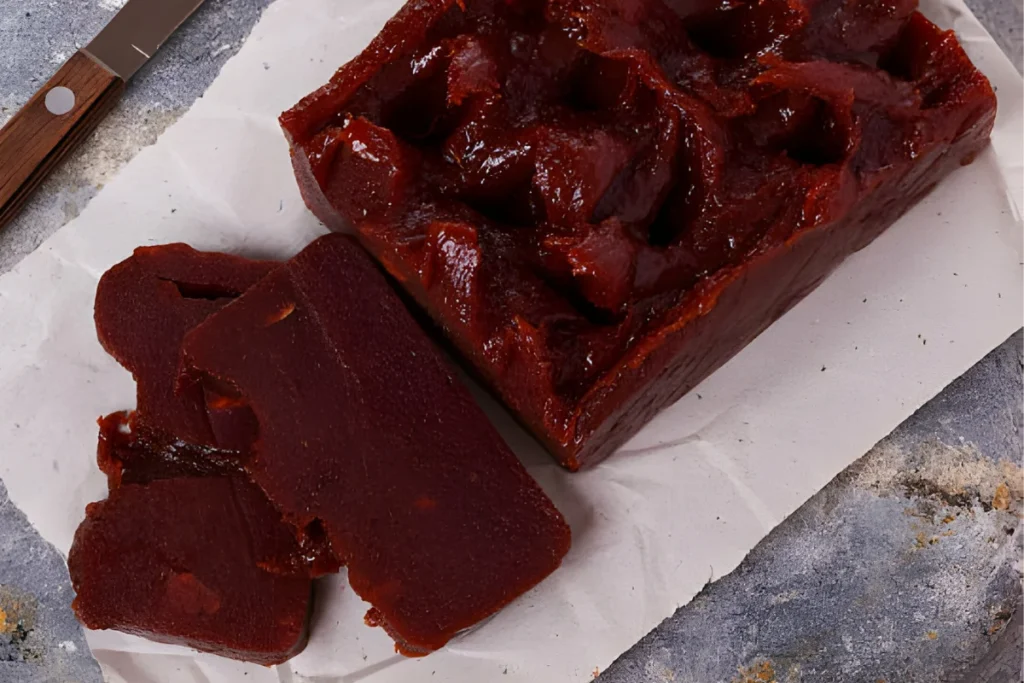Guava paste, a staple in many cuisines, offers a unique blend of sweetness and tartness, making it a versatile ingredient in both savory and sweet dishes. Originating from Latin America, this thick, jelly-like substance is crafted from guava fruit and sugar, boasting a concentrated flavor that enhances a variety of recipes.
- Guava paste enriches desserts and pastries like cakes and empanadas with its rich, fruity flavor, complementing their sweetness. Beyond desserts, it also enhances savory dishes, offering a sweet contrast to cheeses and meats.
Incorporating guava paste into your cooking not only elevates the taste but also introduces the health benefits of guava, including vitamin C and dietary fiber, into your diet. Its versatility extends beyond traditional recipes, inspiring chefs and home cooks alike to explore creative recipes with guava paste, from glazes to fillings, showcasing its ability to blend with various ingredients for both simple and complex dishes.
Making Guava Paste at Home
Creating homemade guava paste is a rewarding process that transforms simple ingredients into a flavorful addition to your pantry. Here’s how to make it:
Ingredients
- Fresh ripe guavas and sugar are the core components.
- Water, for cooking the guavas.
Steps
- Begin by peeling and deseeding the guavas. This preparation ensures a smooth paste.
- Cook the guava flesh with water until it softens, a crucial step for extracting maximum flavor.
- Blend the cooked guava to create a puree, the base of your paste.
- Combine the puree with an equal amount of sugar, cooking over low heat. This mixture should be stirred continuously to prevent sticking and ensure even caramelization.
- Once thickened, the guava mixture transforms into a vibrant, thick paste. Cooling it properly is essential for achieving the right consistency.
This simple yet meticulous process yields a guava paste that’s both rich in taste and versatile in use. From spreading on toast to enhancing desserts, the homemade version surpasses store-bought options in freshness and flavor.
Storing Guava Paste
Proper storage of guava paste is key to maintaining its quality and extending its shelf life. Follow these guidelines to ensure your paste remains fresh and flavorful.
In the Refrigerator
- Place the guava paste in an airtight container to prevent it from absorbing other flavors and odors.
- Refrigeration is ideal for short-term storage, keeping the paste fresh for up to three months.
Freezing for Longevity
- For longer storage, freezing the guava paste is an effective method.
- Wrap the paste tightly in plastic wrap or aluminum foil, then place it in a freezer bag.
- Frozen guava paste can last for up to six months, retaining its taste and texture.
Tips for Best Results
- Label the container with the date of storage to keep track of its shelf life.
- Thaw frozen guava paste in the refrigerator overnight before use, ensuring it returns to its original consistency.
By adhering to these storage practices, your homemade guava paste will remain a delicious complement to various dishes, ready to enhance your meals with its unique flavor.
Extending the Shelf Life
Maximizing the shelf life of guava paste involves a few key strategies that ensure its longevity without compromising quality.
Optimal Storage Conditions
- Store in a cool, dark place to slow down the degradation process.
- Ensure the guava paste is tightly sealed in an airtight container to minimize exposure to air.
Refrigeration
- Keeping the paste in the refrigerator significantly extends its freshness.
- Ideal for maintaining quality for up to three months.
Freezing Techniques
- Freezing is suitable for long-term preservation.
- Wrap the paste properly to prevent freezer burn and store it for up to six months.
Avoiding Contamination
- Use a clean, dry utensil each time to prevent introducing moisture or bacteria.
- This practice helps in keeping the paste safe for consumption over an extended period.
By following these guidelines, the shelf life of guava paste can be effectively extended, ensuring that this flavorful ingredient


